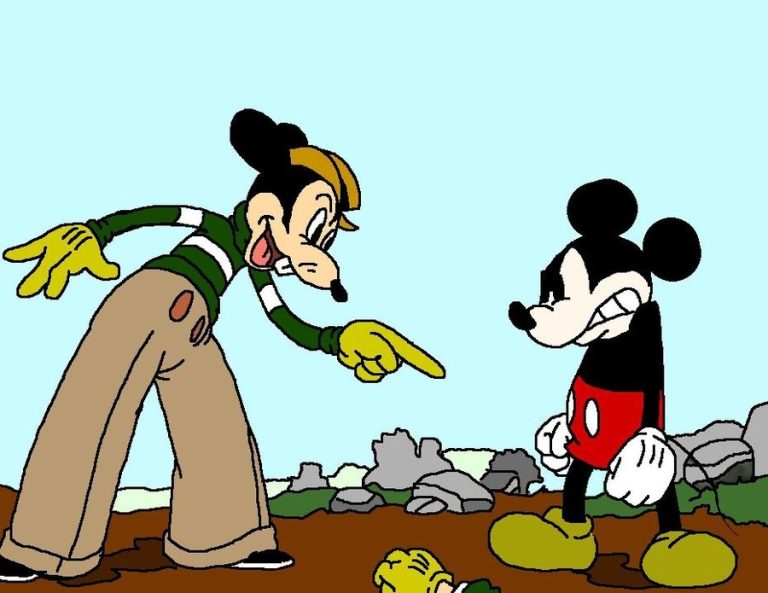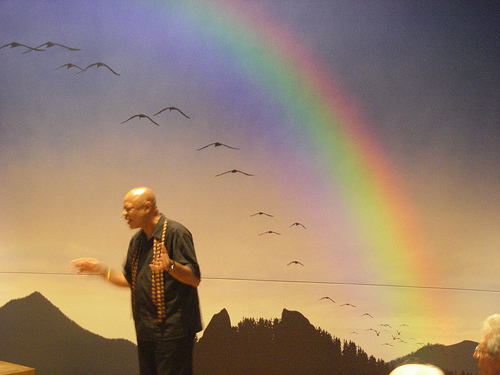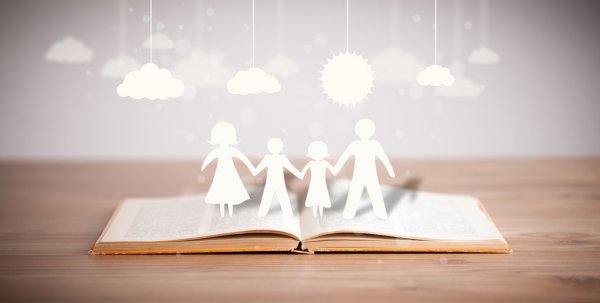Using Archetypes to Create Powerful Characters in Your Fiction
What makes great novels great, more than any other thing, is great characters. And while there are no simple instructions on how to craft a terrific cast of characters, novelists can learn from and benefit by a study of archetypal roles.
In my book The 12 Key Pillars of Novel Construction, I speak at length about the general types of characters we populate our novels with: allies, antagonists, nemeses, romance characters. It’s important to understand both the need for these types of characters and the parts they play in novel structure.
But let’s go beyond these basics to a deeper exploration of character. When we take a look at archetypes, we’re able to get into our characters’ and readers’ psyches.
Why is this a good thing? Because on a subliminal or subconscious level, we well know these types of characters or people. And since motivation is everything when it comes to character, understanding archetypes gives us insight into specific motivation.
If we familiarize ourselves with various archetypes and choose these “masks” carefully and appropriately, they can enrich our stories, give them deeper meaning. And, simply, can help us create strong, memorable characters to populate our novels.
What Is an Archetype?
Archetypes, in general, describe the role a character has in a story. You might think of it as a mask a character wears or part or all of the novel. But just as our own “roles” may change from hour to hour or week to week, our characters can wear different “masks.”
You might wear your “mother” mask while tending to your children, but when counseling a distraught friend, you might put on your “mentor” mask.
So don’t slip too readily into categorizing each of your characters into hard-and-fast roles. The key is to think of your premise and plot and themes, and then once you have some of your basic character types laid out (friend, foe, relative, lover), you can play with these archetypes to see what qualities might best fit them in a way that best serves your story.
As with all characters—and I often say this—you don’t want to randomly pick a personality or trait. Populating a novel with random characters just to give variety doesn’t serve the needs of your plot.
You need to take the time and carefully craft every one of your characters so they are not boring, stereotyped, or purposeless. Many manuscripts I edit and critique have characters in them that are barely defined and even less unique. It takes work to create fantastic characters.
To do so, we have to really know them. We are their creators, and the deeper we go into their every quirk, need, fear, attitude, and dream, the more real they’ll be to our readers and the more they’ll enrich our stories.
Basic Archetypes
While there are loads of archetypes, let’s look at seven of the most common ones and their general function or role in a scene or story:
1) Hero: to serve and sacrifice
2) Mentor: to guide
3) Threshold Guardian: to test
4) Herald: to warn and challenge
5) Shapeshifter: to question and deceive
6) Shadow: to destroy
7) Trickster: to disrupt
The Hero Archetype
We all have a good idea of the hero archetype. That’s our protagonist, whose purpose is to be “called” out of the ordinary world and onto a path that leads to a goal. His job is to complete his quest, face the obstacles in his path, and restore balance to the ordinary world.
The Hero’s journey may also include personal challenge. He might have to win a contest, heal someone, or find love. His goal might include high personal and public stakes. Heroes sacrifice for others. That’s why we love them as protagonists of our stories.
Of course, secondary characters can play heroic roles and often do. My husband was recently watching The Last of the Mohicans for the hundredth time. I can’t think of any better example of a hero archetype than that of Major Heyward, who maneuvers to sacrifice his life to save the woman he loves—and the man she loves—by dying a horrible death by fire. His act allows the two to escape and to be together. His death and his unrequited love are painful to watch but oh so wonderful.
When you plan to place these “masks” on your characters, you need to consider the character’s function in the story, his goal, and the actions he’ll need to take to achieve that goal.
While your protagonist has the goal for your novel, every character should be driven by motivation to behave and make choices (that impact your protagonist). That translates into goals. You want to stop the hero from saving the girl because you love her? That’s your goal.
A more thorough breakdown of some of these archetypes may look like this:
Friends:
1) Magi: the voice of wisdom and experience. Often offers the hero advice—an independent type, often a loner. Think: Yoda or Obi Wan Kenobi in Star Wars.
2) Mentor: Someone much like the hero, who comes alongside.
3) Best Friend: the hero’s confidant.
4) Lover: romantic interest who supports and encourages the hero.
Rivals:
1) Joker: a troublemaker with wit and humor.
2) Jester: a funny guy that usually means well, but can serve in the antagonist’s role.
3) Nemesis: the one aiming to stop or hinder the hero as he goes after his goal.
4) Investigator: someone who butts in when not wanted, causing problems or needing attention.
5) Pessimist: one who constantly disapproves of the hero, sees all outcomes as bad.
6) Psychic: someone with a know-it-all attitude, who might also crave power.
Symbols:
1) Shadow: a character who mirrors the hero’s flaws or shortcomings.
2) Lost Soul: one who symbolizes the hero’s past.
3) Double: a role model for the hero—what he longs to be, one who embodies the true essence of his own character.
The Threshold Guardian may seem menacing or opposed to the hero, but he can also be turned into an ally. Anyone who tries to hold the hero back in some way, can be seen to be guarding the “threshold.”
The Herald issues challenges and announces change. He motivates the hero and spurs him into action.
The Shapeshifter is a twofaced character who is fickle and infuses doubt and suspense.
While I’ve only begun to touch on some of these character types, I hope this gets you to start thinking a bit about archetypes and how you might work them into your story. We’ll go deeper into all this over the next weeks.
Any thoughts about archetypes? Do you consciously work them into your story? What characters come to mind that embody one of the archetypes mentioned above?
Want to craft great characters? Check out the online course: Your Cast of Characters
Learn all about creating the perfect cast for your novel in this new online video course. The course launches MAY 1, 2020, but you can enroll now and get $50 OFF the regular price by using coupon code EARLYBIRD. Sign up HERE at my online school. Remember: you CANNOT access any of the modules until May 1. I’ll be sending you an email at that time to let you know the doors are open!
 Your characters are the heart of your story, so be ready to learn a lot of great tips. BONUS! Included in your course are interviews with best-selling authors, who discuss their process of how they come up with the best characters for their stories. You can’t find these videos anywhere else but in my new course.
Your characters are the heart of your story, so be ready to learn a lot of great tips. BONUS! Included in your course are interviews with best-selling authors, who discuss their process of how they come up with the best characters for their stories. You can’t find these videos anywhere else but in my new course.
And remember: you have lifetime access to all my courses at cslakin.teachable.com, and you also get a 30-day money-back guarantee, always. I want you to be happy with the content you are learning. So …. no risk! And check out all my other online courses while you’re at it. Thousands of writers have taken these courses around the world and sing their praises.
Here’s some of what you’ll learn in this extensive course:
- What the basic types of characters are and what roles they play in a story
- How your plot and premise inform the characters you develop
- How to determine if a character is essential to your plot or just “filler”
- What kind of supportive characters does your specific story need and how you can determine that
- How to create characters that act as symbols
- What archetypes are and how you can utilize them to create fantastic characters
- How incidental characters can make or break your story
- Why understanding character motivation is paramount
These video modules feature numerous excerpts from novels, movie clips, and deep instruction. In addition, you are given assignments to help you develop a great cast of characters which you can download and do over and over as needed. Be prepared to learn!












I am presently working through The Hero’s Journey Course with my writing coach. I smiled as I saw this post today. I am also reading your book The 12 Key Pillars of Novel Construction, and I am learning a lot. It is a joy to read.
Thank you.
Shalom aleichem,
Pat
That hero’s journey really resonates with us. We’ve been ingrained with it so when we write stories with those markers, they can be strong and effective. Have fun and hope you keep learning!
Wow, I realized that I have characters in my novel that fit the basic archetypes you listed that I didn’t realize had that role. I was thinking particularly about “The Herald.” I think that role could be fulfilled by someone literally warning the hero about something in the main plot, but in my case, the herald is a character in a subplot that becomes a symbol for the main plot. Probably any of those archetypes could be done in a literal way, or a more symbolic way. That could be important to keep in mind.
Great comment, thanks! And one character might wear a different “mask” at a different time, serving a function like that only temporarily.
I use archetypes in my fiction, especially in my novels.
But I’ve discovered that it’s no good to choose the archetype before I start writing – the characters then refuse to play that role and become someone quite different.
It works much better if I write the first draft of the novel without thinking about archetypes. Once the first draft is completed, the characters have revealed their personalities to me, and I know them quite well. Now I can see easily what archetypes they represent.
I look for ways to enhance and intensify their archetypal patterns, and do this during the rewrites and revisions. This always gives the characters more depth and the story more power.
Thanks for sharing that. With this latest novel I did both. I’d already had my two main character types, and reading up on the archetypes (I explain in next week’s post) helped me flesh out characteristics that were useful to my story. But then knowing I could use a Magi or Mentor character helped me fashion characters that would fit those roles. So I think writers could benefit from both approaches. Appreciate the comment!